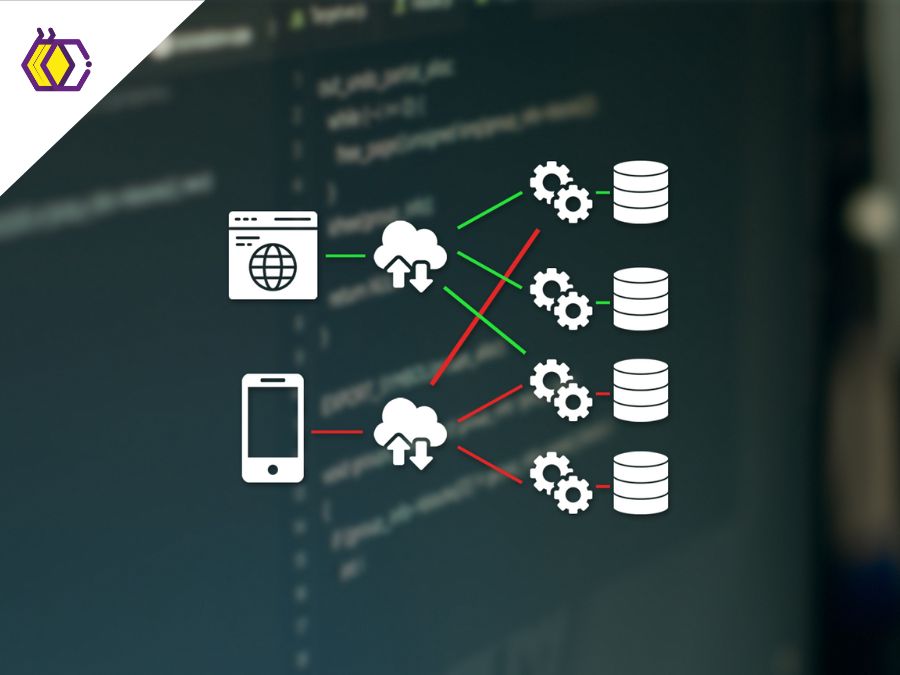

BFF
(7 minutes of reading) Nowadays, interconnection and user experience are at the heart of apps and websites development. To achieve this goal, a perfect collaboration between different layers of technology is essential, this is where the concept of BFF, or Backend For Frontend, comes in. Here, we'll explore in detail what BFF is, how it works, and why it has become such a crucial part of modern development. UNDERSTAND THE FUNDAMENTALS Before we dive into the complexities of the BFF concept, let's lay out the basics of app and website development. Basically, a modern app or website is built using two main layers: the Backend and the Frontend. 1) Backend: This is the part of the application that handles business logic, data processing and communication with databases, external systems and APIs. It is responsible for managing authentication, authorization, forms processing, database operations, and other essential functionality. 2) Frontend: The Frontend layer is the one with which users interact directly. It encompasses the user interface (UI), visuals, interactivity, and everything visible and accessible to users. This layer is built using technologies such as HTML, CSS and JavaScript. THE USER EXPERIENCE CHALLENGE In the early days of application development, the separation between Backend and Frontend was more rigid. However, as user expectations have increased, the need for a faster, smoother, and more personalized experience has emerged. This is where the concept of the BFF came into play. Imagine a scenario where a mobile app needs to fetch data to populate a list of items. In a traditional approach, the application would make a single call to the Backend, which would return all the necessary data. However, this approach often results in an unnecessary data overload, negatively impacting loading speed and the overall experience. THE RISE OF THE BFF To overcome this challenge, the concept of Backend For Frontend started to gain popularity. BFF refers to an intermediate layer between Frontend and Backend, designed to meet specific user interface needs. In other words, it's a customized Backend for each type of client (generally, different platforms or devices). With the BFF approach, the business logic is more distributed. Instead of having a single Backend that serves all the data for all platforms, there are several specialized Backends to serve different interfaces. This allows developers to optimize APIs calls to meet the specific needs of each platform, thereby improving loading speed and user experience. BFF BENEFITS The BFF approach offers few benefits for app and website development. Below are some of those benefits: 1) BETTER USER EXPERIENCE By optimizing APIs calls for each platform, developers can deliver a faster and more responsive experience to users, resulting in greater satisfaction. 2) ENHANCED CUSTOMIZATION Each platform has different requirements and characteristics. With BFF, you can customize API responses to each platform's specific needs, providing a more consistent and tailored experience. 3) AGILE DEVELOPMENT Backend separation into multiple specialized Backends allows development teams to work more independently and agilely. This also facilitates the maintenance and continuous evolution of the system. 4) SAFETY AND SCALABILITY The BFF can also be designed to address platform-specific security and scalability concerns, ensuring sensitive data is protected and the system can handle an increase in demand. IMPLEMENTING BFF IN 6 STEPS Implementing BFF effectively requires careful planning and a solid understanding of the needs of the application or site in question. Here are 6 key steps to successfully implementing a Backend For Frontend: 1) Platform Identification: Determine the different platforms or devices that the application will serve, such as mobile, web and other applications. 2) Needs Mapping: Analyze the specific needs of each platform. For example, a mobile app may require a smaller amount of data compared to the web version. 3) BFF Project: Create specialized Backends for each platform. This may involve creating independent services or logically segmenting the existing Backend. 4) APIs Definition: Clearly define the APIs that BFF will offer for the Frontend. This may involve creating specific endpoints for each type of data required. 5) Call Optimization: Optimize APIs calls according to the needs of each Frontend. This can include selectively selecting fields to return or trimming unnecessary data. 6) Testing and Validation: Carry out rigorous testing to ensure that the BFF is correctly meeting the needs of each Frontend and that the user experience has improved. BFF USE CASES Backend For Frontend concept has been widely adopted in a variety of contexts. Some notable examples include: a) MULTIPLE PLATFORMS Applications that are accessed through multiple platforms such as web, Android and iOS can benefit from BFF to optimize the experience on each platform. b) ELECTRONIC COMMERCE APPLICATIONS E-commerce platforms can use BFF to personalize product and promotion recommendations based on each user's shopping history. c) SOCIAL MEDIA APPLICATIONS Applications such as social networks can use BFF to provide a consistent yet personalized user interface across devices. d) STREAMING PLATFORM Video or music streaming services can adjust the quality and amount of data delivered based on the available bandwidth on each device. CONCLUSION The concept of Backend For Frontend (BFF) brought a significant change in the development of applications and websites, allowing a more personalized and responsive user experience. By optimizing APIs calls to meet each platform's specific needs, BFF improves load speed and overall system efficiency. With the continued rise in user expectations, BFF has proven to be a valuable approach to achieving harmony between Backend and Frontend, resulting in high quality apps and websites that meet the demands of the digital age. And there? What do you think of our content? Be sure to follow us on social media to stay up to date!
Share this article on your social networks:
Rate this article:
[yasr_visitor_votes size=”medium”]



